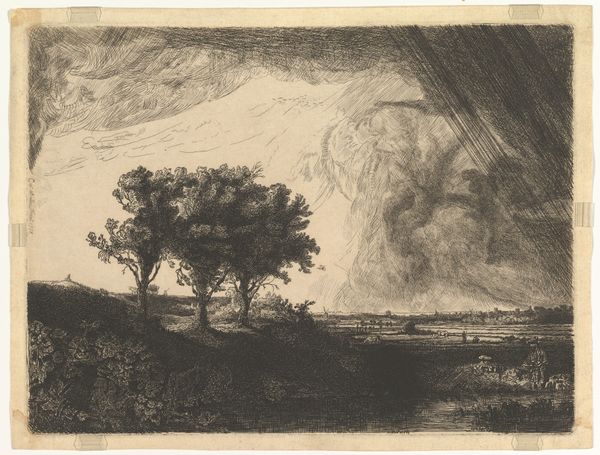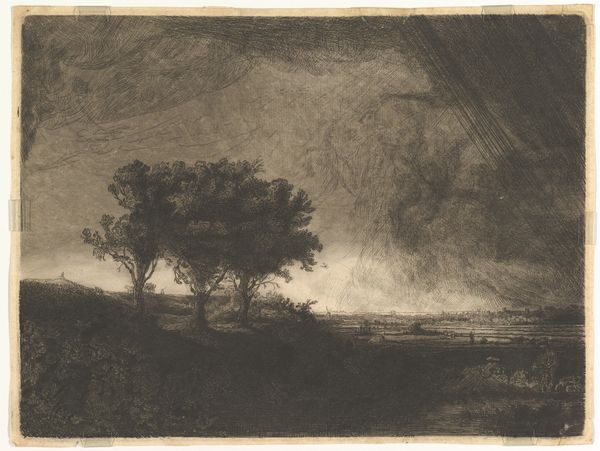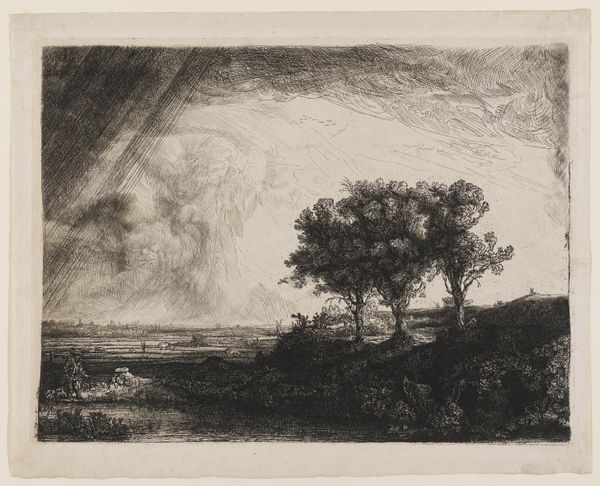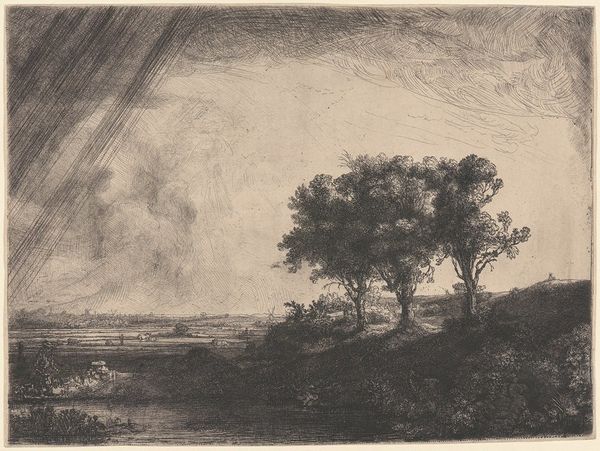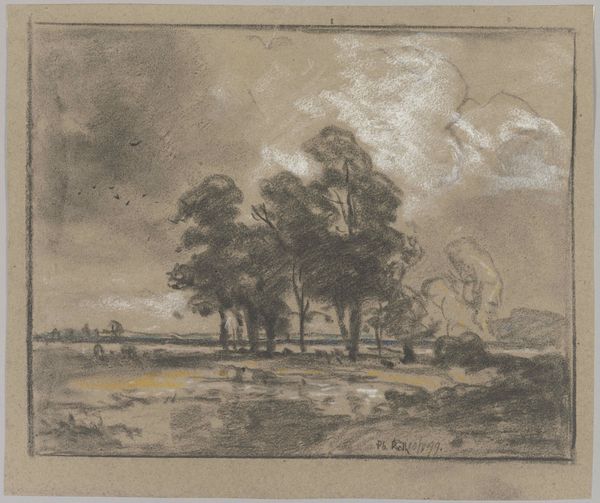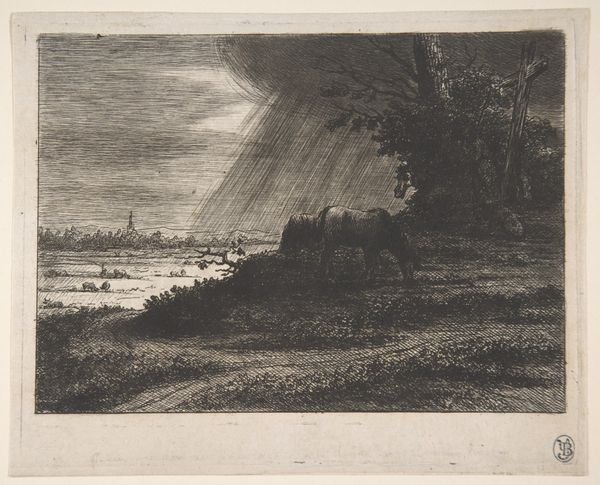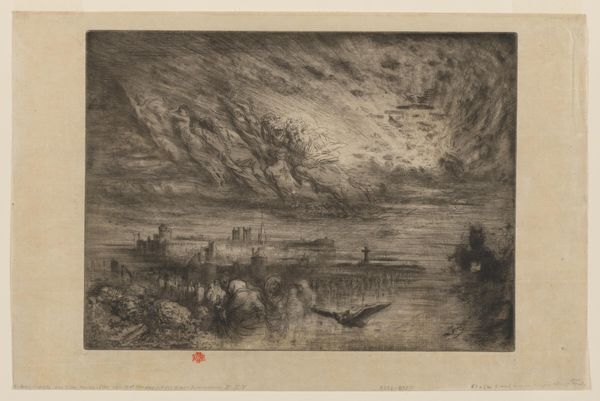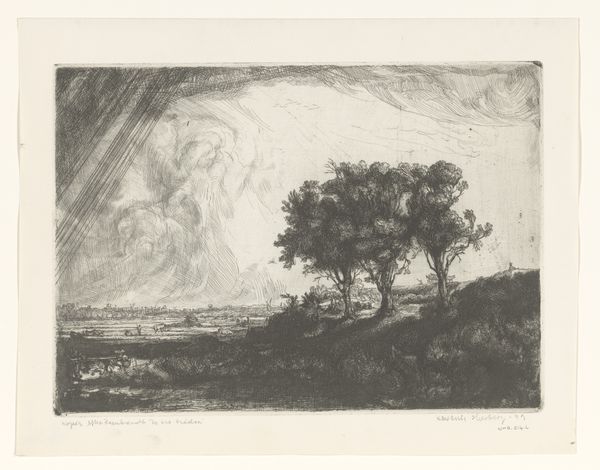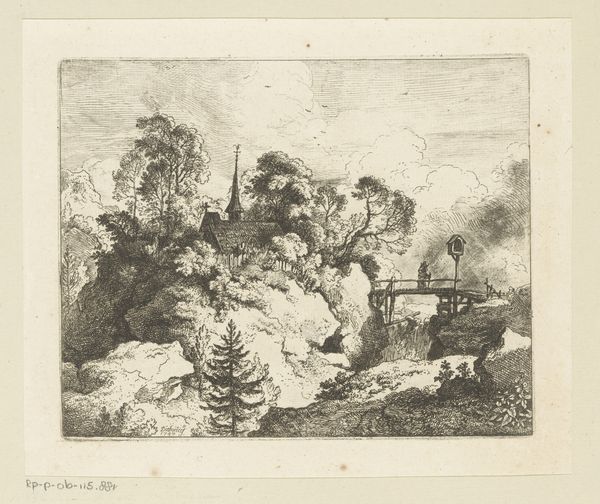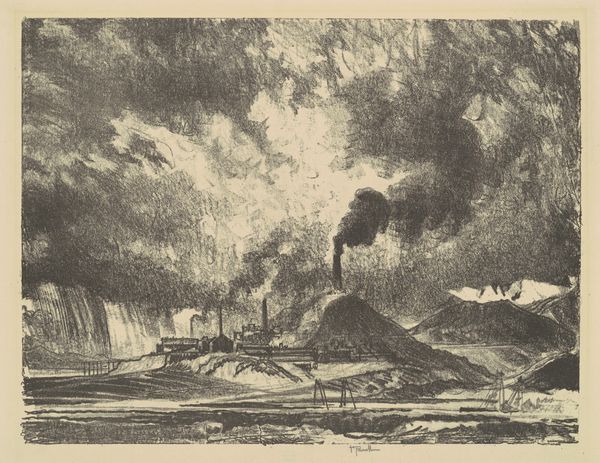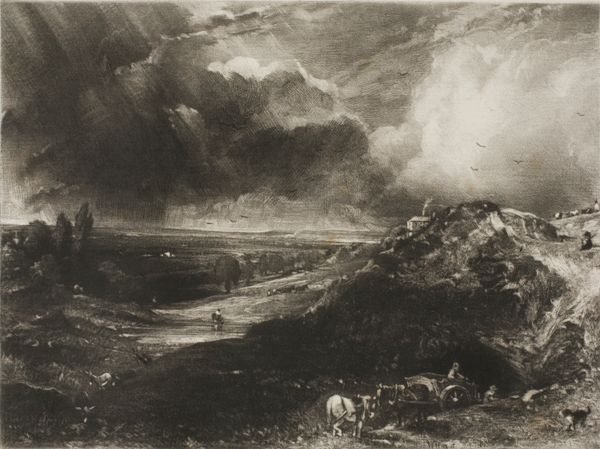
drawing, print, etching
#
tree
#
drawing
#
baroque
# print
#
etching
#
landscape
Dimensions: plate: 8 1/4 x 11 in. (21 x 28 cm) sheet: 8 11/16 x 11 3/8 in. (22 x 28.9 cm)
Copyright: Public Domain
Editor: This is "The Three Trees, after Rembrandt," an etching from 1758 by Captain William Baillie, now residing at The Met. The dramatic sky makes the scene feel incredibly ominous and powerful to me, contrasting the relatively still trees. What compositional elements stand out to you? Curator: Indeed. Let's focus on the organization of pictorial space. Note the artist's strategic use of diagonal lines, directing our gaze from the illuminated lightning strike down towards the darkened foreground. Baillie, a later copyist, adopts a highly textured surface. Notice how this texture, achieved through the etching process, lends itself to dramatic light effects, particularly across the cloud formations. Editor: I see what you mean about the diagonals; the eye definitely moves quickly through the picture plane. The density of marks also contributes a sense of immediacy, despite the calculated composition. But if it's a copy, does it have value on its own? Curator: A fair question. We must consider Baillie's technical choices in the context of printmaking. His lines, heavier and more deliberate than what is observed of Rembrandt’s prints, shift our emphasis from line work to light and texture; observe this in relation to Baroque values regarding luminosity and affect. While inspired by the Dutch master, Baillie’s etching is an interpretative response. We have the original in a different room if you’re interested? Editor: Yes, definitely, it would be insightful to study both up close to determine how much was adapted from the source versus imagined anew. Curator: Excellent. Looking at it from this lens makes one conscious of the dialogue, as opposed to the derivative approach, adopted by Baillie with Rembrandt.
Comments
No comments
Be the first to comment and join the conversation on the ultimate creative platform.
